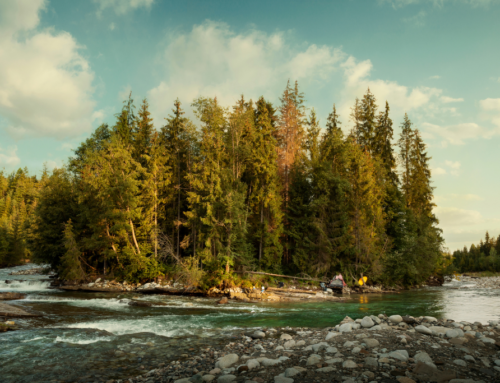GoCampingAmerica.com | Posted January
20th, 2022
5
Major Meteor Showers Coming to a Sky Near You
Happy Camper Blog
Watching a
meteor shower light up the sky can be a truly magical experience for you and
your family. And since many campgrounds are located in darker areas away from
the distraction of city lights, camping is one of the best ways to enjoy
these dazzling astronomical displays. Here’s a quick guide to five major
meteor showers that will appear in 2022 and how to make the most of
them.
First of all, let’s take a quick look at what meteors really are.
According to NASA, a meteor is a space rock—or meteoroid—that enters Earth’s
atmosphere. As it falls toward the Earth, the resistance makes it extremely
hot, creating what’s often called a “shooting star.” What we’re really
seeing, though, is not the rock itself but the trail of glowing hot air that
the rock leaves behind as it zips through the atmosphere. Another interesting
fact is that meteor showers are named for the constellation they appear to be
coming from. So, for example, the Lyrid meteor shower appears to originate from
the constellation Lyra.
#1: Lyrids
Peak viewing: Before dawn on April 21
and 22
Estimated # of meteors per
hour: 10-15 during peak hours, but surges can occur
with up to 100 per hour
Fun fact: These meteors come from a
comet discovered in 1861 that orbits the sun only once about every 415
years.
#2: Perseids
Peak viewing: Before dawn on August
11-12
Estimated # of meteors per hour:
50
Fun fact: This dazzling meteor
shower, which comes from the constellation Perseus, even includes fireballs,
which are explosions of light and color.
#3: Oronids
Peak viewing: Before dawn on October
20-21
Estimated # of meteors per hour:
15
Fun fact: These meteors appear to
radiate from the “club” of the constellation Orion the
Hunter.
#4 Leonids
Peak viewing: Before dawn on November
16-17
Estimated # of meteors per hour:
10
Fun fact: Every 33 years, the Leonids
have a peak year where they can produce hundreds of meteors per hour, so mark
your calendar for 2034! In 1966, the Leonids generated as many as thousands
of meteors per minute over a 15-minute
span!
#5: Geminids
Peak viewing: All night on December
13-14
Estimated # of meteors per hour: On a
dark night, 50 or more meteors can be seen per hour.
Fun fact: These meteors are thought
to originate from an asteroid instead of a comet.
NASA offers a few helpful tips for spotting these spectacular
shooting stars: First, grab some blankets, a sleeping bag and a
thermos of something warm to drink like hot chocolate. Then lie down and get
comfortable. Let your eyes relax and try not to look at any particular spot.
This will make it easier to notice any movement so you’ll be able to spot
more meteors. Last of all, be patient! The quality of your viewing will
depend on many factors such as the specific meteor shower, the conditions of
the sky, the time of day and the phase of the moon. And remember, the dates
of peak viewing are estimates. The meteors have the final
say!
Where to Watch
The darker the sky, the better your chances will be to spot meteor
showers. The International Dark-Sky Association has identified a list of
International Dark Sky Communities (link to
https://www.darksky.org/our-work/conservation/idsp/communities/) that are
dedicated to preserving and protecting dark sites through responsible
lighting policies and public education. Once you find a dark sky area you’d
like to visit, go to GoCampingAmerica.com to find a great campground nearby
where you can get in some quality meteor-watching!





